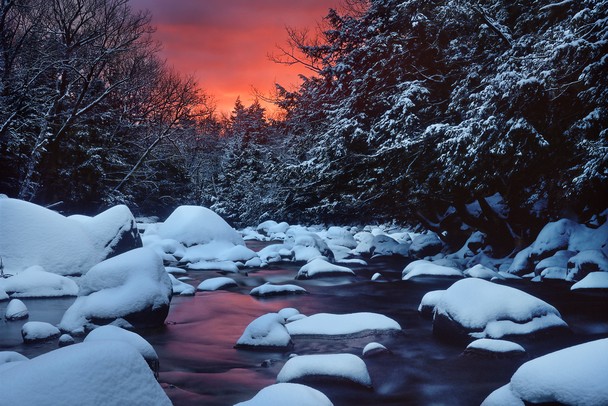
The seasonal cycle of river ice formation and break-up influences the hydrological regime of the river system and thereby the ecology. During the spring, when physical status of the river changes rapidly, there is often a substantial water level increase, temperature alteration and suspension of sediment. These processes could effect nutrient cycles, alter biochemistry of the water system and introduce pollutants. Additionally, as river ice breaks up, stream flow increases, modifying the channel bed through erosional forces. If stream flows are sufficiently strong, system geomorphology could also be transformed. These ice-break up effects are thought to reduce species populations, food sources and primary productivity. Fish species are often seen avoiding major break-up events by seeking sanctuary in stagnant water. (Prowse, 2001; Shuter, et al., 2012).
After a period of ice-free conditions during the summer, many river organisms are able to adapt to survive in the cooling winter environment. Numerous fish species have been shown to reduce alter their metabolism by reducing physical activity in order to reduce requirement for nourishment. Additionally, specific habitats within a river system are chosen as winter habitats to ensure survival. Usually these locations are in slower moving water or adjacent lake and wetland systems. The most beneficial winter shelter is one with available groundwater inflow. Some invertebrates remain in their usual habitat, freezing in place by shifting into a state of dormancy (Prowse, 2001).

Ecosystems vary across the Arctic, but are generally made up of microorganisms, plants, invertebrates and vertebrates. Microorganisms include bacteria, algae and phytoplankton; these organisms are very small and can persist in severe climates. Many invertebrates live in Arctic river systems such as bivalves, gastropods, worms, insects and zooplankton. Many of these species live in river channels and are highly diverse. The most abundance vertebrate species in Arctic rivers are fish, which feed on lower order organisms. Some species include Trout, Whitefish, Pike, Perch and Char (RAMP, 2013).
Material on this page was edited and provided by Maren Pauly and Tristan Mills, Department of Geography, University of Waterloo. Hover over images for photograph credit.
